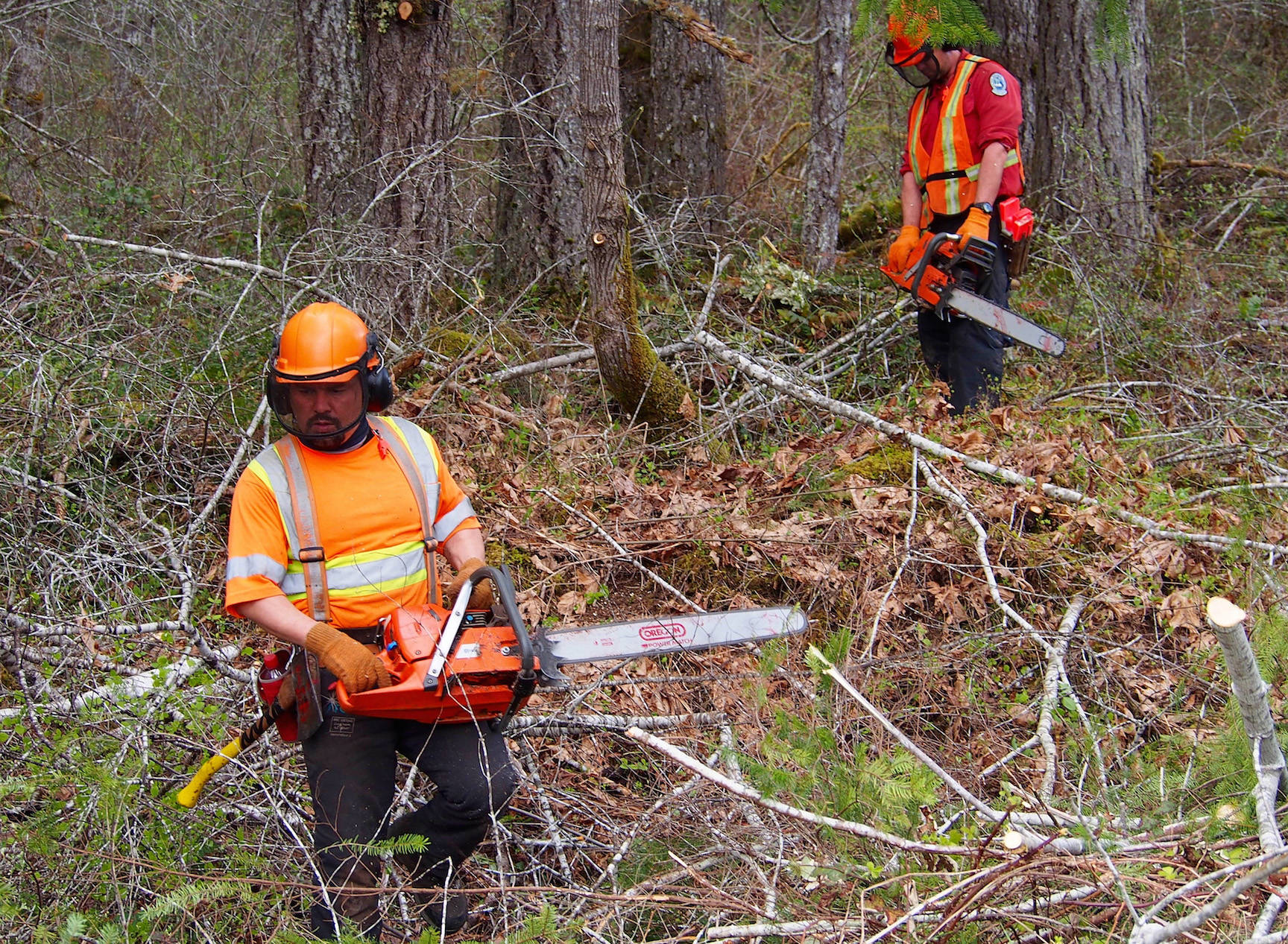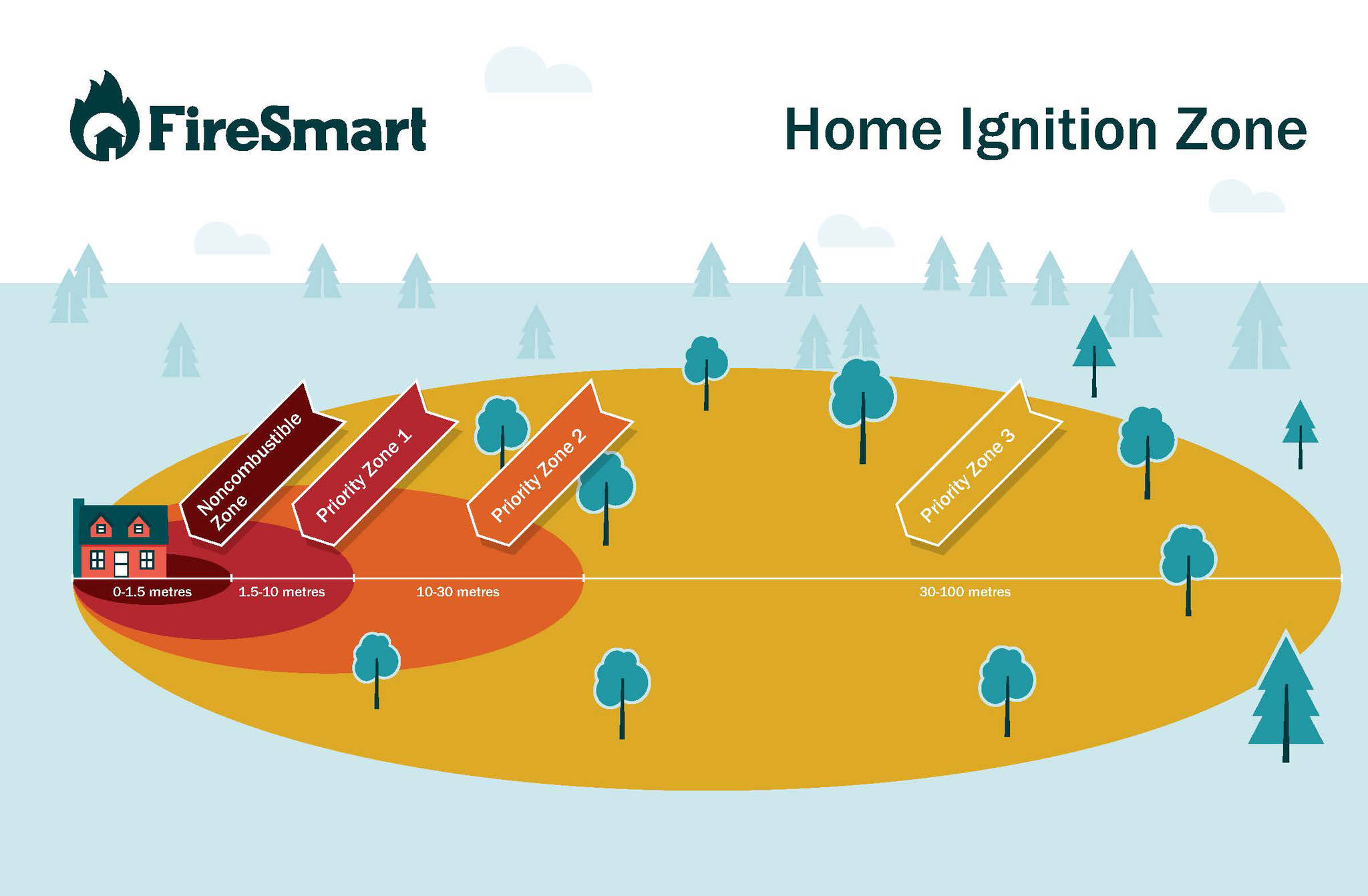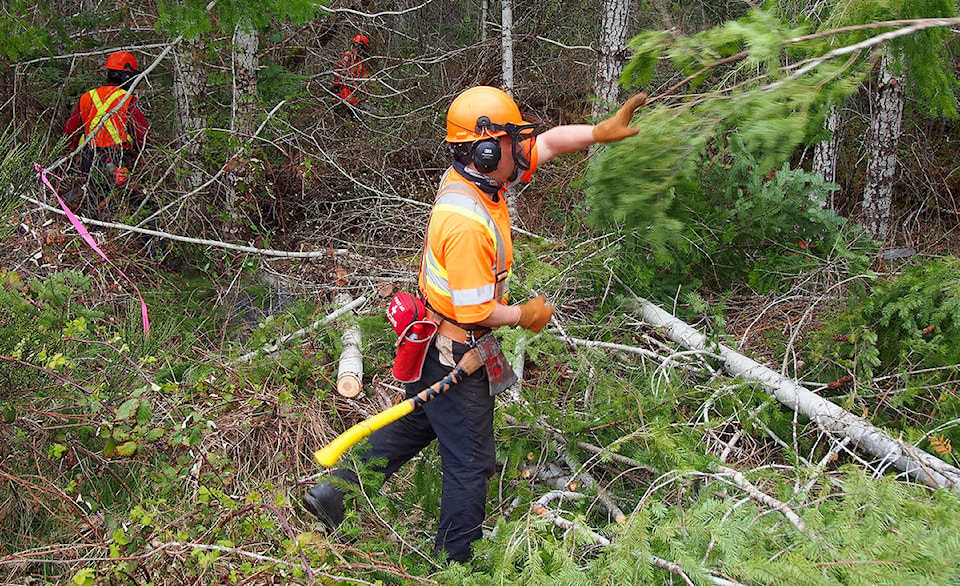BY MIKE YOUDS
There is a lot more of Sproat Lake Community Hall that’s showing after a crew of wildfire fighters cleared surrounding forest in a demonstration for Community Fire Smart Day.
Sproat Lake Volunteer Fire Department hosts the event on Saturday, May 4, 10 a.m.-2 p.m., inviting all valley residents to learn more about protecting their homes and properties from wildfire.
Emergency responders will be on hand with information and demonstrations, part of a national public awareness campaign by FireSmart Canada.
“It’s going to be hosted in Sproat Lake, but really it’s a valley-wide event,” said Chris Wynans, fire prevention officer with SLVFD.
While it’s too early to call the wildfire season that lies ahead, the last two have been chart-toppers: the most destructive fire season B.C. has ever experienced took place in 2018, the second most destructive in 2017. Will the trend continue?
“When I first started, it was every three or four years,” said Leon Gallic, foreman with the Thunderbird Unit Crew, an elite wildfire management crew based at the airport. “Now it’s every year.”
Clearing the forest on the two-hectare community hall property is intended to show the full meaning of “ignition zones,” based on a method developed by the U.S. Forest Service 30 years ago to identify and manage hazards relating to wildfire. It’s a pointed reminder that more than 50 structures burned in B.C. wildfires last year. In 2017, 300 went up in smoke.
“Last year we did have a good number of fires,” Wynans said, adding that the Turtle Lake fire near Great Central Lake was one that had potential to threaten buildings.
While the B.C. Interior has intense heat and extremely dry conditions more frequently, the Coast has its own risk factors, including abundant forest fuels in close proximity to buildings.
Developed from research showing how homes tend to ignite through radiant heat, the priority zones range anywhere from 10 to 30 metres around a structure.
The immediate zone should be cleared of all combustibles while the intermediate zone is landscaped to maximum effect, allowing for fuel breaks and limiting shrubs to small clusters. Conifers should be thinned in the extended zone with emphasis on more fire-resistant deciduous species.
SLVFD holds an annual open house in early June (this year it’s June 8 at 10 a.m.), but this is their first FireSmart event, Wynans said.
The community hall is located next to the Coulson Flying Tankers office (turn right at Lakeshore Road).


